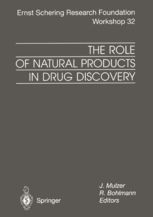The Revolutionary Role of Nanoparticles in Textiles
Nanotechnology has revolutionized the textile industry, introducing a new era of innovation and performance. Incorporating nanoparticles into textiles not only enhances their aesthetic appeal but also significantly improves their functionality. This article will explore the various ways nanoparticles are being used in textiles, including their benefits, challenges, and potential applications. We'll also present an example of how nanoparticles have been incorporated into a popular textile product.
Benefits of Nanoparticles in Textiles
Nanoparticles offer several advantages to textiles, including:

-
Improved Durability: Nanoparticles can enhance the durability of textiles by improving their scratch resistance and stain resistance. For example, titanium dioxide nanoparticles can be added to fabrics to make them more resistant to UV rays and water damage.
-
Enhanced Color Visibility: Adding nanoparticles to textiles can increase the clarity and brightness of colors. For instance, carbon nanotubes can be used to enhance the appearance of colored textiles.
-
Functionality: Nanoparticles can be used to create functional textiles with unique properties. For example, silver nanoparticles can be added to fabrics to create antibacterial textiles that are effective against harmful bacteria.
-
Energy Efficiency: Some nanoparticles can improve the energy efficiency of textiles by reducing the amount of energy required to dry or wash them. For example, graphene nanoplatelets can be used as a moisture-wicking agent in textiles to improve their comfort and breathability.
-
Antimicrobial Properties: Nanoparticles can also be used to create antimicrobial textiles that repel bacteria and viruses. For example, zinc oxide nanoparticles can be added to fabrics to create antibacterial clothing that is effective against MRSA and other types of bacteria.
Challenges of Nanoparticles in Textiles
While the benefits of incorporating nanoparticles into textiles are significant, there are also some challenges that need to be addressed. These include:
-
Regulations: There is currently no standardized regulation for the use of nanoparticles in textiles. As such, manufacturers must comply with local and international regulations before incorporating nanoparticles into their products.
-
Cost: The addition of nanoparticles to textiles can increase production costs. Manufacturers must balance the benefits of using nanoparticles with the cost implications.
-
Safety: Some nanoparticles may pose health risks if they are ingested or come into contact with the skin. Manufacturers must ensure that their products are safe for human consumption.

Example of Nanoparticles in Textiles
One example of how nanoparticles have been incorporated into textiles is in the development of antibacterial fabrics. For example, DuPont developed a line of antimicrobial fabrics that incorporate silver nanoparticles. These fabrics are designed to kill bacteria on contact, making them ideal for use in healthcare settings.
Conclusion
In conclusion, the use of nanoparticles in textiles offers numerous benefits, from improved durability to enhanced functionality. However, manufacturers must address the challenges associated with incorporating these particles into their products. By doing so, they can create innovative textiles that meet the needs of consumers while promoting sustainability and environmental protection.
纺织品添加纳米颗粒简介
随着科技的飞速发展,纺织品行业迎来了新的变革,纳米颗粒添加已经成为一种趋势,为纺织品增添了新的功能和特性,纳米颗粒具有许多独特的优点,如增强纤维强度、改善纤维耐久性、提高纤维吸湿性等,它们的应用不仅可以提高纺织品的性能,还可以满足人们对环保、健康和舒适度的更高要求。
纳米颗粒在纺织品中的应用案例
新型抗菌纤维
近年来,纳米抗菌纤维成为纺织品市场的新宠,这种纤维通过在纤维中添加纳米颗粒,可以有效抑制细菌生长,延长衣物使用寿命,某品牌的新型抗菌纤维,采用了特殊的纳米抗菌剂,可以有效抵抗多种细菌的繁殖,同时保持了纤维的柔软舒适性。

功能性面料
纳米颗粒还可以用于功能性面料的制作,某些面料添加了能够吸收汗水的纳米颗粒,可以提供更好的透气性和舒适度,这种面料适用于运动服装、户外装备等领域。
纳米颗粒在纺织品中的添加方法
添加纳米颗粒的方法多种多样,包括直接添加、复合添加等,直接添加是将纳米颗粒均匀分散在纤维中;复合添加则是将纳米颗粒与其他功能性材料复合在一起,形成具有特定性能的纺织品。
纳米颗粒添加对纺织品性能的影响
纳米颗粒的添加对纺织品性能产生了积极的影响,纳米颗粒可以增强纤维的强度和耐磨性,提高纤维的使用寿命,纳米颗粒可以提高纤维的吸湿性,使纺织品更加透气和舒适,纳米颗粒还可以提高纺织品的环保性能,减少对环境的污染。
纳米颗粒添加的表格说明
以下是关于纳米颗粒添加的表格说明:
| 类别 | 术语 | 描述 | 示例材料 | 添加方法 | 效果说明 |
|---|---|---|---|---|---|
| 应用领域 | 纺织品 | 新兴的纺织材料技术 | 抗菌纤维、功能性面料等 | 直接添加、复合添加等 | 提高性能、满足更高要求 |
| 纳米颗粒类型 | 种类 | 具有特定物理和化学性质的小颗粒 | 金属氧化物、碳纳米管等 | 根据需求选择合适的纳米颗粒类型 | 提高强度、耐久性、吸湿性等 |
| 应用效果 | 功能特性 | 如增强强度、改善耐久性、提高吸湿性等 | 无具体材料限制 | 根据具体应用场景选择合适的添加方式和应用比例 | |
| 实例产品 | 品牌名称 | 具体产品介绍 | 如某品牌的新型抗菌纤维等 | 根据市场和客户需求选择合适的品牌和型号 |
随着科技的不断发展,纺织品行业迎来了新的变革,纳米颗粒添加已经成为一种趋势,为纺织品增添了新的功能和特性,通过添加纳米颗粒,可以显著提高纺织品的性能,满足人们对环保、健康和舒适度的更高要求,随着科技的不断进步和应用领域的不断扩大,纳米颗粒在纺织品中的应用将会更加广泛和深入。
Articles related to the knowledge points of this article:
The Story of Xian Xinyucheng Mengrou Textile Wholesale Shop
Exploring the World of Fashionable Textiles with Xin Yue Textiles Live Show
A Comprehensive Guide to Renowned Ruijin Bokang Home Textiles



